Front End by Sigma
Introduction
It is usually a daunting task to know what to learn next, especially if you are beginning your journey. This guide aims to help you find relevant competence areas to focus on and suggest what to prioritize first to speed up the learning process.
Contribute
If you have any opinions or suggestions then feel free to create an issue and make sure to tag it with improvement for any new suggestions or invalid if any existing information is incorrect.
Levels
Feel free to learn whatever you want regardless of level. However be aware that a higher level suggests that you will have a harder time if you lack fundamental knowledge.
| Lv.0 | You might be familiar with some concepts but lack professional experience. |
| Lv.1 | You should comprehend the basics of HTML, CSS and JavaScript. You should also be aware of the essential tools and platforms and be able to use them assuming they are setup and configured beforehand. |
| Lv.2 | You should know most features of HTML, CSS, JavaScript and be accustomed to commonly used libraries and frameworks. You are aware of multiple programming paradigms and know basic functional programming. You should also be better versed with different tools and able to setup and configure some from scratch. |
| Lv.3 | You should be proficient with advanced concepts and be able to combine the right technologies and tools from an architectural perspective. |
| Lv.4 | You are a master in one or more areas and an active contributor to standards and the open source community. |
Remarks
| cold | Is becoming obsolete, but is still commonly used. Should be avoided for new projects. |
| hot | Is either very new with great potential or widely adopted with an active community. |
| recommended | Is very usefull in most situations. |
| required | Necessary for any successful development project. |
Markup
-

HTML5
Lv. 1requiredThe key to writing good HTML is a fundamental understanding of semantics. It is essential to know how to properly use <header>, <footer>, <main>, <article>, <section>, <aside>. How <table> is intended to be used and how it is usally abused. How to correctly structure headings. Using <form> and <input> as well as all input field types and validation rules. Make good valid decisions wether to use <a> or <button>. Lastly, avoiding to go overboard with <div> and <span>.
Read more: HTML5
Related subjects:
- Awesome HTML A curated list of awesome HTML5 resources. Level 1
- HTML5 Doctor Level 2
- Let's Talk About Semantics Level 2
- Avoiding Common HTML5 Mistakes Level 2
- MDN - HTML Level 1
-

Microdata
Lv. 2recommendedRead more: Microdata
Related subjects:
- HTML5 Doctor - Microdata Level 2
- Google Webmasters Level 2
- Dive into HTML5 - Extensibility Level 2
- Schema.org Level 2
-

Accessibility
Lv. 2requiredRead more: Accessibility
Related subjects:
- W3C - WCAG 2.0 Level 2
- W3C - WAI-ARIA Level 2
- WebAIM Level 2
- Pro HTML5 Accessibility, Joshue O Connor, ISBN:978-1430241942 Level 2
Styling - General
-
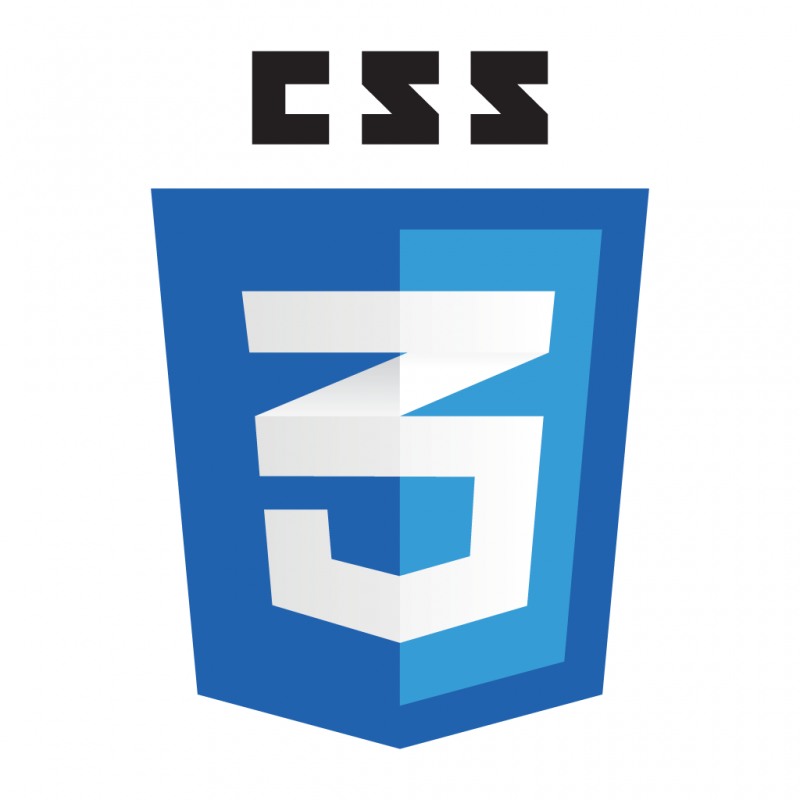
CSS3
Lv. 1requiredRead more: CSS3
Related subjects:
- Awesome CSS A curated contents of amazing CSS. Level 1
- MDN - CSS Level 1
- CSS-Tricks Level 1
- The 30 CSS Selectors You Must Memorize Level 1
-

CSS Animations
Lv. 2recommendedIdentify and fix paint storms, layout thrashing, utilizing composite layers and debouncing
Read more: CSS Animations
Related subjects:
- Jank Free Level 3
Styling - Frameworks/Libs
-

Bootstrap
Lv. 2Read more: Bootstrap
-

Foundation
Lv. 2Read more: Foundation
-

inuitcss
Lv. 2Read more: inuitcss
-

Materialize
Lv. 2Read more: Materialize
-

Tachyons
Lv. 2Read more: Tachyons
Styling - Architecture
-
Atomic Design
Lv. 2recommendedRead more: Atomic Design
-

Atomic CSS
Lv. 2Read more: Atomic CSS
-

BEM
Lv. 2requiredRead more: BEM
-
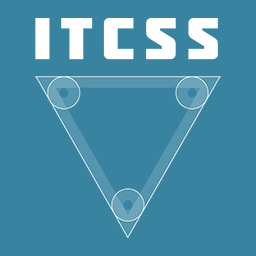
ITCSS
Lv. 2 -
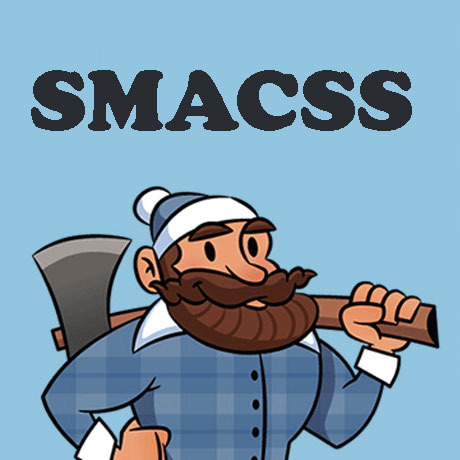
SMACSS
Lv. 2Read more: SMACSS
-

SUIT CSS
Lv. 2Read more: SUIT CSS
Styling - Preprocessors
CSS preprocessors has long been the solution to creating DRY CSS, handle browser prefixing and more. Among the alternatives Sass has been the most popular and community supported. However with recent developments of CSS a lot of the features that made preprocessors useful are now landing natively in CSS. Wheter you are working on an existing project or starting a new one you should instead focus on CSS postprocessors. Using PostCSS together with plugins such as cssnext and cssnano you will be able to write future proof CSS with automatic browser fallbacks and optimizations.
Styling - Postprocessors
CSS postprocessors is the current way forward. Using PostCSS together with plugins such as cssnext and cssnano you will be able to write future proof CSS with automatic browser fallbacks and optimizations.
-

cssnano
Lv. 2requiredRead more: cssnano
-

cssnext
Lv. 2coldEnables you to use the latest CSS features and automatically transpile for backwards compatibility. Now replaced by postcss-preset-env.
Read more: cssnext
Related subjects:
- postcss-preset-env Level
-
PostCSS
Lv. 2hot requiredRead more: PostCSS
Programming - General
-

JavaScript (EcmaScript)
Lv. 1requiredRead more: JavaScript (EcmaScript)
Related subjects:
- MDN - JavaScript Level 1
- MDN - Strict Mode Level 1
- MDN - Inheritance and the Prototype Chain Level 1
- MDN - Closures Level 1
- HTML5 Rocks - Promises Level 2
- Promise Anti Patterns Level 2
- JS Objects: Inherited a Mess There is a huge misconception about how objects and the prototype chain actually work. This article makes it clear about the semantics and why the new class syntax (ES2015) makes things worse. Level 2
-

ES2015 (formerly ES6 or EcmaScript 6)
Lv. 2requiredRead more: ES2015 (formerly ES6 or EcmaScript 6)
-

Flow
Lv. 2hotFlow is a static type checker for JavaScript.
Read more: Flow
-

TypeScript
Lv. 2hotTypeScript is a typed superset of JavaScript that compiles to plain JavaScript.
Read more: TypeScript
Related subjects:
- Awesome TypeScript A collection of awesome TypeScript resources for client-side and server-side development. Level 1
-
Awesome TypeScript
Lv. 1Read more: Awesome TypeScript
-

Babel
Lv. 2requiredBabel is a JavaScript compiler that let's you use the next generation of JavaScript, today.
Read more: Babel
Programming - Frameworks/Libs
JavaScript is widely know for having a pletora frameworks and libraries. The platform is rapidly evolving and the open source ecosystem is boiling with innovative solutions that will hopefully make it into the standard.
-

Ampersand
Lv. 3Read more: Ampersand
-
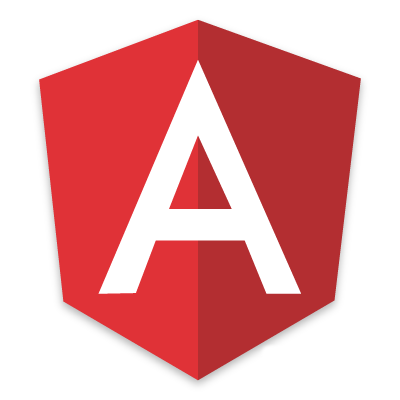
AngularJS
Lv. 3cold -

Angular
Lv. 3hotRead more: Angular
Related subjects:
- Awesome Angular Awesome list of Angular 2 and Angular 4 seed repos, starters, boilerplates, examples, tutorials, components, modules, videos, and anything else in the Angular ecosystem. Level 1
-

Aurelia
Lv. 3hotRead more: Aurelia
Related subjects:
- Awesome Aurelia A curated list of amazingly awesome Aurelia libraries. Level 1
-

Backbone
Lv. 3coldRead more: Backbone
-
Cycle
Lv. 2hotRead more: Cycle
Related subjects:
- Awesome Cycle.js A curated list of awesome Cycle.js resources. Level 1
-

Ember
Lv. 3Read more: Ember
-

Inferno
Lv. 2Read more: Inferno
-

jQuery
Lv. 1coldRead more: jQuery
-

Lodash
Lv. 2recommendedRead more: Lodash
-

mobX
Lv. 2Read more: mobX
-

normalizr
Lv. 2Normalizes nested JSON according to a schema.
Read more: normalizr
-

Preact
Lv. 2Read more: Preact
-

React
Lv. 2hot recommendedRead more: React
Related subjects:
- Awesome React A collection of awesome things regarding React ecosystem. Level 1
- Awesome React Components Catalog of React Components & Libraries. Level 1
-

ReactiveX
Lv. 3hot recommended -

Redux
Lv. 2hot recommendedRead more: Redux
Related subjects:
- Awesome Redux Catalog of Redux Libraries & Learning Material. Level 1
-

Redux Saga
Lv. 2hot recommendedredux-saga is a library that aims to make side effects (i.e. asynchronous things like data fetching and impure things like accessing the browser cache) in React/Redux applications easier and better.
Read more: Redux Saga
-

Redux Observable
Lv. 2hot recommendedRead more: Redux Observable
-

Reselect
Lv. 2recommendedSimple “selector” library for Redux inspired by getters in NuclearJS, subscriptions in re-frame and this proposal from speedskater.
Read more: Reselect
-

Riot
Lv. 2Read more: Riot
-

snabbdom
Lv. 2Read more: snabbdom
-

Vue
Lv. 2hotRead more: Vue
Related subjects:
- Awesome Vue A curated list of awesome things related to Vue.js. Level 1
-

xstream
Lv. 3Read more: xstream
Programming - Functional Programming
Mastering functional programming is a huge undertaking. However learning a few basic concepts will produce code with several qualities such as compact, simple, predictable, powerful, flexible and reuseable. Initially you should focus on learning about first class functions, higher order functions, currying, partial application, point free and composition. When you have a good understanding of these concepts proceed with exploring functors and monads. Primarily Identity, Maybe, Either, IO and Task. From here on you will have a solid foundation and be ready to go further down the rabbit hole.
-

elm
Lv. 3hotA delightful language for reliable webapps. Generate JavaScript with great performance and no runtime exceptions.
Read more: elm
Related subjects:
- Awesome Elm A community driven list of useful Elm tutorials, libraries and software. Level 1
-

Folktale
Lv. 3Folktale is a suite of libraries for generic functional programming in JavaScript that allows you to write elegant modular applications with fewer bugs, and more reuse.
Read more: Folktale
-

Immutable
Lv. 2hotImmutable collections for JavaScript.
Read more: Immutable
-

Ramda
Lv. 2hot recommendedA practical functional library for JavaScript programmers that is a great starting point for the novice functional programmer. With it's optimized currying it is easy to utilize in both an imperative an functional fashion.
Read more: Ramda
-

PureScript
Lv. 3hotPureScript is a small strongly typed programming language that compiles to JavaScript.
Read more: PureScript
Related subjects:
- Awesome PureScript A curation of awesome PureScript libraries, resources and shiny things. Level 1
-

Sanctuary
Lv. 2hotSanctuary is a JavaScript functional programming library inspired by Haskell and PureScript. It's stricter than Ramda, and provides a similar suite of functions.
Sanctuary promotes programs composed of simple, pure functions. Such programs are easier to comprehend, test, and maintain – they are also a pleasure to write.
Sanctuary provides two data types, Maybe and Either, both of which are compatible with Fantasy Land. Thanks to these data types even Sanctuary functions which may fail, such as head, are composable.
Sanctuary makes it possible to write safe code without null checks. In JavaScript it's trivial to introduce a possible run-time type error.Read more: Sanctuary
-

Ramtuary
Lv. 2Ramda + Ramda Fantasy + Sanctuary REPL. A useful tool for getting comfortable with functional programming and some of the most popular libraries.
Read more: Ramtuary
Programming - Polyfills
In front end you never know what browser your code will run in and sometimes you may be dependent on native features that may or may not be available for a specific version. This is where polyfills come in, polyfills are third party libraries that have the single purpose of emulating a native browser feature.
-

Polyfill Service
Lv. 2Just the polyfills you need for your site, tailored to each browser. Polyfill.io reads the User-Agent header of each request and returns polyfills that are suitable for the requesting browser.
Read more: Polyfill Service
Programming - Logging
-

StackTrace.JS
Lv. 2Generate, parse, and enhance JavaScript stack traces in all web browsers.
Read more: StackTrace.JS
Data Formats
When it comes to front end there are mainly three popular data formats JSON, YAML and XML. XML used to be the most widely used, but has succumbed in favor of the lighter and less verbose formats. You are likely to see these data formats being used in varying situations e.g. configuration, data transactions and persistance.
-

JSON
Lv. 1requiredRead more: JSON
-

XML
Lv. 1requiredRead more: XML
-

YAML
Lv. 1requiredRead more: YAML
Templating Engines
-
Freemarker
Lv. 2Read more: Freemarker
-

Handlebars
Lv. 2Read more: Handlebars
-
Liquid
Lv. 2Read more: Liquid
-

Markdown
Lv. 2requiredRead more: Markdown
Related subjects:
- Markdown Cheatsheet Examples of markdown syntax and what it renders. Level 2
- Dillinger An online markdown editor with a side by side preview. Level 2
-

Mustache
Lv. 2Read more: Mustache
-
Pug
Lv. 2Read more: Pug
-
Razor
Lv. 2Read more: Razor
Architecture
-
Atomic Design
Lv. 2recommendedRead more: Atomic Design
-

Atomic CSS
Lv. 2Read more: Atomic CSS
-

BEM
Lv. 2requiredRead more: BEM
-

ITCSS
Lv. 2 -

SMACSS
Lv. 2Read more: SMACSS
-

SUIT CSS
Lv. 2Read more: SUIT CSS
-

Flux
Lv. 2requiredRead more: Flux
Quality & Test - Unit Testing
-

AVA
Lv. 2Read more: AVA
-

Chai
Lv. 2Read more: Chai
-

Jasmine
Lv. 2requiredRead more: Jasmine
-

Jest
Lv. 2hotRead more: Jest
-

JSDom
Lv. 2recommendedRead more: JSDom
-

Karma
Lv. 2recommendedRead more: Karma
-

Mocha
Lv. 2Read more: Mocha
-

qUnit
Lv. 2coldRead more: qUnit
-

Sinon
Lv. 2recommendedRead more: Sinon
-

Tape
Lv. 2recommendedRead more: Tape
-

Wallaby
Lv. 2recommendedRead more: Wallaby
Quality & Test - End-to-end
-

CasperJS
Lv. 2Navigation scripting & testing for PhantomJS and SlimerJS.
Read more: CasperJS
-

Browsersynk
Lv. 2recommendedTime-saving synchronised browser testing.
Read more: Browsersynk
-
Nightmare
Lv. 2A high-level browser automation library.
Read more: Nightmare
-

PhantomJS
Lv. 2PhantomJS is a headless WebKit scriptable with a JavaScript API. It has fast and native support for various web standards: DOM handling, CSS selector, JSON, Canvas, and SVG.
Read more: PhantomJS
-

Protractor
Lv. 2Protractor is an end-to-end test framework for Angular and AngularJS applications. Protractor runs tests against your application running in a real browser, interacting with it as a user would.
Read more: Protractor
-

SlimerJS
Lv. 2A scriptable browser for Web developers
Read more: SlimerJS
-

WebdriverIO
Lv. 2requiredWebDriver bindings for Node.js
Read more: WebdriverIO
Quality & Test - Visual Regression Testing
-

Galen Framework
Lv. 2Automated testing of look and feel for your responsive websites.
Read more: Galen Framework
-

PhantomCSS
Lv. 2Read more: PhantomCSS
-

Wraith
Lv. 3Read more: Wraith
Quality & Test - Continuous Integration
-

BrowserStack
Lv. 2Read more: BrowserStack
-

Buddy
Lv. 2Read more: Buddy
-
Circle CI
Lv. 2Read more: Circle CI
-

Code Climate
Lv. 2Read more: Code Climate
-

David.
Lv. 2Read more: David.
-

Greenkeeper
Lv. 2Real-time monitoring and automatic updates for npm dependencies.
Read more: Greenkeeper
-

Sauce Labs
Lv. 2Read more: Sauce Labs
-

Travis CI
Lv. 2Read more: Travis CI
Security
Methodology
-

Content First
Lv. 1recommendedRead more: Content First
-

Mobile First
Lv. 1requiredRead more: Mobile First
-

Offline First
Lv. 1recommendedRead more: Offline First
-

Responsive Web Design
Lv. 1requiredRead more: Responsive Web Design
-

Progressive Enhancement
Lv. 2recommendedRead more: Progressive Enhancement
Related subjects:
-
Progressive Web Apps
Lv. 2requiredRead more: Progressive Web Apps
-

Single Page Applicstions
Lv. 2requiredRead more: Single Page Applicstions
Analytics
-

Crazy Egg
Lv. 2Read more: Crazy Egg
-

Google Analytics
Lv. 2Read more: Google Analytics
-

Piwik
Lv. 2recommendedRead more: Piwik
CMS
-

contentful
Lv. 2Read more: contentful
-

Episerver
Lv. 2Read more: Episerver
-

Jekyll
Lv. 2Read more: Jekyll
-
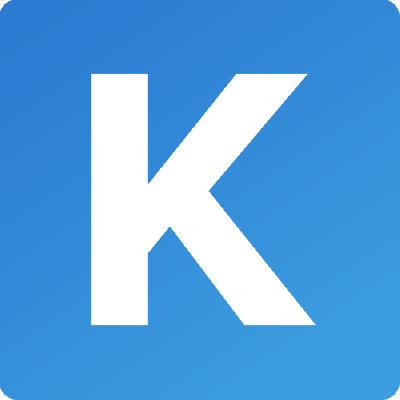
KeystoneJS
Lv. 2Read more: KeystoneJS
-

Magnolia
Lv. 2Read more: Magnolia
-

Orchard
Lv. 2Read more: Orchard
-

WordPress
Lv. 2Read more: WordPress
Cross Platform Applications
-

Cordova
Lv. 3Read more: Cordova
-
Electron
Lv. 3Read more: Electron
-

Ionic
Lv. 3Read more: Ionic
-

PhoneGap
Lv. 3Read more: PhoneGap
-

React Native
Lv. 3Read more: React Native
Tools - General
-

Node.js
Lv. 1requiredRead more: Node.js
-

Docker
Lv. 2recommendedRead more: Docker
-

Vagrant
Lv. 2coldRead more: Vagrant
-

Emmet
Lv. 2recommendedRead more: Emmet
-

Quokka
Lv. 1recommendedQuokka.js is a rapid prototyping playground for JavaScript and TypeScript. It runs your code immediately as you type and displays various execution results in your code editor.
Read more: Quokka
-

npm Trends
Lv. 1Compare package download counts over time
Read more: npm Trends
Tools - Building
-

Browserify
Lv. 2Read more: Browserify
-

Grunt
Lv. 1cold -

Gulp
Lv. 1coldRead more: Gulp
-

RequireJS
Lv. 2coldRead more: RequireJS
-

Rollup
Lv. 2hotRead more: Rollup
-
webpack
Lv. 2hot recommendedRead more: webpack
Related subjects:
- Awesome Webpack A curated list of awesome Webpack resources, libraries and tools. Level 1
Tools - Documentation
-

ESDoc
Lv. 2hot recommendedRead more: ESDoc
-

JSDoc
Lv. 2requiredRead more: JSDoc
-

Fractal
Lv. 2Read more: Fractal
-

KSS (Knyle Style Sheets)
Lv. 2Documentation for any flavor of CSS that you’ll love to write. Human readable, machine parsable, and easy to remember.
Read more: KSS (Knyle Style Sheets)
-
Pattern lab
Lv. 2Read more: Pattern lab
Tools - Editors/IDE
-

EditorConfig
Lv. 1requiredEditorConfig helps developers define and maintain consistent coding styles between different editors and IDEs. The EditorConfig project consists of a file format for defining coding styles and a collection of text editor plugins that enable editors to read the file format and adhere to defined styles. EditorConfig files are easily readable and they work nicely with version control systems.
Read more: EditorConfig
-

Atom
Lv. 1recommendedRead more: Atom
Related subjects:
- Awesome Atom A curated list of delightful Atom packages and resources. Level 1
- Supercharge JavaScript development in Atom One of many good setups for Atom. Level 1
-

Codekit (OSX)
Lv. 1Read more: Codekit (OSX)
-

Sublime Text
Lv. 1Read more: Sublime Text
-

Textmate (OSX)
Lv. 1Read more: Textmate (OSX)
-

Visual Studio
Lv. 2Read more: Visual Studio
-

Visual Studio Code
Lv. 2recommendedRead more: Visual Studio Code
Related subjects:
- Awesome VSCode A curated list of delightful VS Code packages and resources. Level 1
-

WebStorm
Lv. 2recommendedRead more: WebStorm
Tools - Linting
Linting is a form of static code analysis that aims to find syntax errors and enfore best practices. It has been adopted in other languages such as Java and C# for quite some time, while front end has caught on in recent years. It started with JSLint which was very opinionated which led to the creation of JSHint which was more flexible. Since these tools focused on best practices there was also JSCS for checking code style and format. All of these tools have now been succeeded by ESLint which is a plugin based and extendable ruleset. For CSS (and preprocessor languages) we have the equivalent which is stylelint.
-
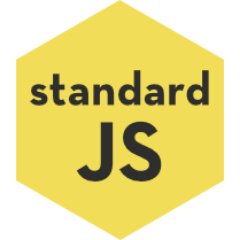
Standard JS
Lv. 2hot recommended requiredJavaScript Standard Style, One JavaScript Style to Rule Them All
Read more: Standard JS
-
ESLint
Lv. 2requiredESLint is by far the best linter for JavaScript, being plugin-based means that it can be extended to meet all future needs. There is already a good ecosystem of plugins that contain presets and best practises for specific frameworks (e.g. Angular and React). If you are working with bleeding edge EcmaScript features then there is a chance that ESLint might fail sometimes. Luckaly the tool is so flexibel so that you can even swap the parser with a different one (e.g. babel-eslint).
Read more: ESLint
Related subjects:
- Awesome ESLint A currated list of ESLint configs, plugins, etc. Level 2
-

TSLint
Lv. 2requiredAn extensible linter for the TypeScript language.
Read more: TSLint
-

stylelint
Lv. 2requiredHistorically when it comes to linting CSS there hasn't been many options, until recently that is. stylelint takes a lot of inspiration from the JavaScript linting tool ESLint, in that way that it allows for extensibility through plugins.
Read more: stylelint
Related subjects:
- stylelint-scss If you are working with Sass, then this plugin is great for enforcing coding conventions and best practices that are specific to Sass. Level 2
- stylelint-selector-bem-pattern If you have adopted BEM as your CSS architecture, then this plugin helps you ensure that selectors are written accoring to the BEM patterns. Level 2
Tools - Package Management
-

Bower
Lv. 1coldBower was created as the npm for the front end. However, since then a lot of front end packages have moved on to npm and those that are still Bower exclusive can be fetched using a git URL. It is recommended to avoid using Bower since it really just duplicates what npm already does.
Read more: Bower
-

jspm
Lv. 2Read more: jspm
-

npm
Lv. 1requirednpm is the de facto package manager for JavaScript. Otherwise, yarn is a great alternative with better security features and faster installations. Although you might use yarn for package management it is still recommended to use npm's script feature to create and execute build commands.
Read more: npm
Related subjects:
- How to Use npm as a Build Tool Level 2
-

yarn
Lv. 1hot recommendedyarn is an alternative package manager to npm. It promises added security and faster installation of dependencies. It works well in parallel to npm so there is no problem using both on a larger team.
Read more: yarn
Tools - Performance
-

Calibre
Lv. 2A fully-automated tool suite for auditing and improving performance, so you can deliver content to your customers faster.
Read more: Calibre
-

Lighthouse
Lv. 2Lighthouse is an open-source, automated tool for improving the quality of web pages. You can run it against any web page, public or requiring authentication. It has audits for performance, accessibility, progressive web apps, and more.
Read more: Lighthouse
-

Yellow Lab Tools
Lv. 2Online test to help speeding up heavy web pages.
Read more: Yellow Lab Tools
-

Sitespeed.io
Lv. 2Sitespeed.io is a set of Open Source tools that helps make your web pages faster.
Read more: Sitespeed.io
-

Babel Minify
Lv. 1An ES6+ aware minifier based on the Babel toolchain.
Read more: Babel Minify
-

UglifyJS
Lv. 1UglifyJS is a JavaScript parser, minifier, compressor and beautifier toolkit.
Read more: UglifyJS
Tools - Sandboxes
-

Codepen
Lv. 1Read more: Codepen
-

Dabblet
Lv. 1Read more: Dabblet
-

JSFiddle
Lv. 1Read more: JSFiddle
-

Plunker
Lv. 1Read more: Plunker
-

Sass Meister
Lv. 1Read more: Sass Meister
Tools - Scaffolding
-

Yeoman
Lv. 2Yeoman helps you to kickstart new projects, prescribing best practices and tools to help you stay productive.
Read more: Yeoman
Tools - Version Control
-

Bitbucket
Lv. 1Read more: Bitbucket
-

Git
Lv. 1Read more: Git
-

GitHub
Lv. 1Read more: GitHub
-
GitHub Desktop
Lv. 1Read more: GitHub Desktop
-

GitKraken
Lv. 1recommendedRead more: GitKraken
-

GitLab
Lv. 1Read more: GitLab
-

Gogs
Lv. 1Read more: Gogs
-
Rush
Lv. 2Rush: a scalable monorepo manager for the web
Read more: Rush
-

SourceTree
Lv. 1Read more: SourceTree
-
Aaron Gustafson
Read more: Aaron Gustafson
-
Addy Osmani
Read more: Addy Osmani
-
André Staltz
Read more: André Staltz
-
Ashley Williams
Read more: Ashley Williams
-
Brad Frost
Read more: Brad Frost
-
Brian Lonsdorf
Read more: Brian Lonsdorf
-
Bruce Lawson
Read more: Bruce Lawson
-
Christian Heilmann
Read more: Christian Heilmann
-
Dan Abramov
Read more: Dan Abramov
-
David Walsh
Read more: David Walsh
-
Eric Elliott
Read more: Eric Elliott
-
Ethan Marcotte
Read more: Ethan Marcotte
-
Jafar Husain
Read more: Jafar Husain
-
Jason Grigsby
Read more: Jason Grigsby
-
Jeffrey Zeldman
Read more: Jeffrey Zeldman
-
Jeremy Keith
Read more: Jeremy Keith
-
John Papa
Read more: John Papa
-
Karen McGrane
Read more: Karen McGrane
-
Kent C. Dodds
Read more: Kent C. Dodds
-
Kristina Halvorson
Read more: Kristina Halvorson
-
Kyle Simpson
Read more: Kyle Simpson
-
Lara Hogan
Read more: Lara Hogan
-
Luke Wroblewski
Read more: Luke Wroblewski
-
Marcy Sutton
Read more: Marcy Sutton
-
Mattias P Johansson
Read more: Mattias P Johansson
-
Orde Saunders
Read more: Orde Saunders
-
Paul Irish
Read more: Paul Irish
-
Scott Jehl
Read more: Scott Jehl
-
Steve Faulkner
Read more: Steve Faulkner
-
Tammy Everts
Read more: Tammy Everts
-
Tim Kadlec
Read more: Tim Kadlec
-
Wes Bos
Read more: Wes Bos
-
Yehuda Katz
Read more: Yehuda Katz
Blogs
-

Addy Osmani
Read more: Addy Osmani
-

Brad Frost
Read more: Brad Frost
-

Christian Heilmann
Read more: Christian Heilmann
-

Jeremy Keith
Read more: Jeremy Keith
-

Luke Wroblewski
Read more: Luke Wroblewski
-

Orde Saunders
Read more: Orde Saunders
Newsletters
-
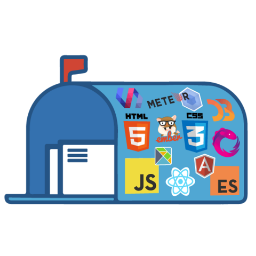
Front end Newsletter
Read more: Front end Newsletter
-

Responsive Design Newsletter
Read more: Responsive Design Newsletter
Online Courses
-

Egghead
recommendedRead more: Egghead
-

Frontend Masters
recommendedRead more: Frontend Masters
-

Learn JavaScript with Eric Elliott
Read more: Learn JavaScript with Eric Elliott
-

Treehouse
Read more: Treehouse
Youtube
-

AngularJS
Read more: AngularJS
-

funfunfunction
Read more: funfunfunction
-

Google Developers
Read more: Google Developers
-

JSConf
Read more: JSConf
-

SassBites
Read more: SassBites
